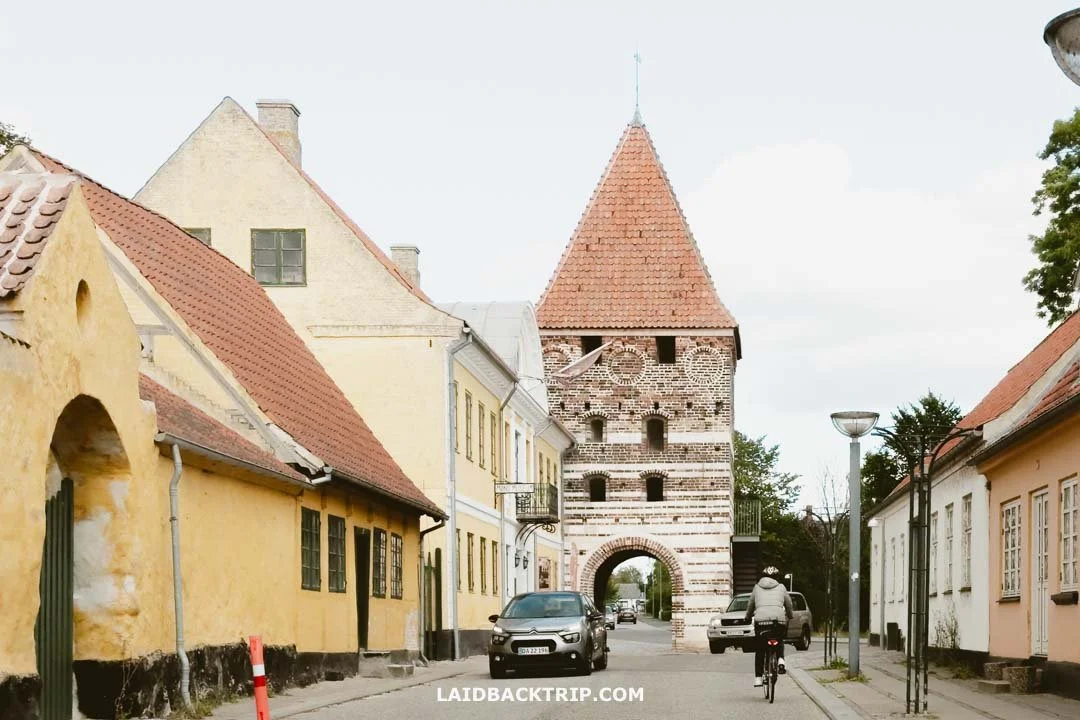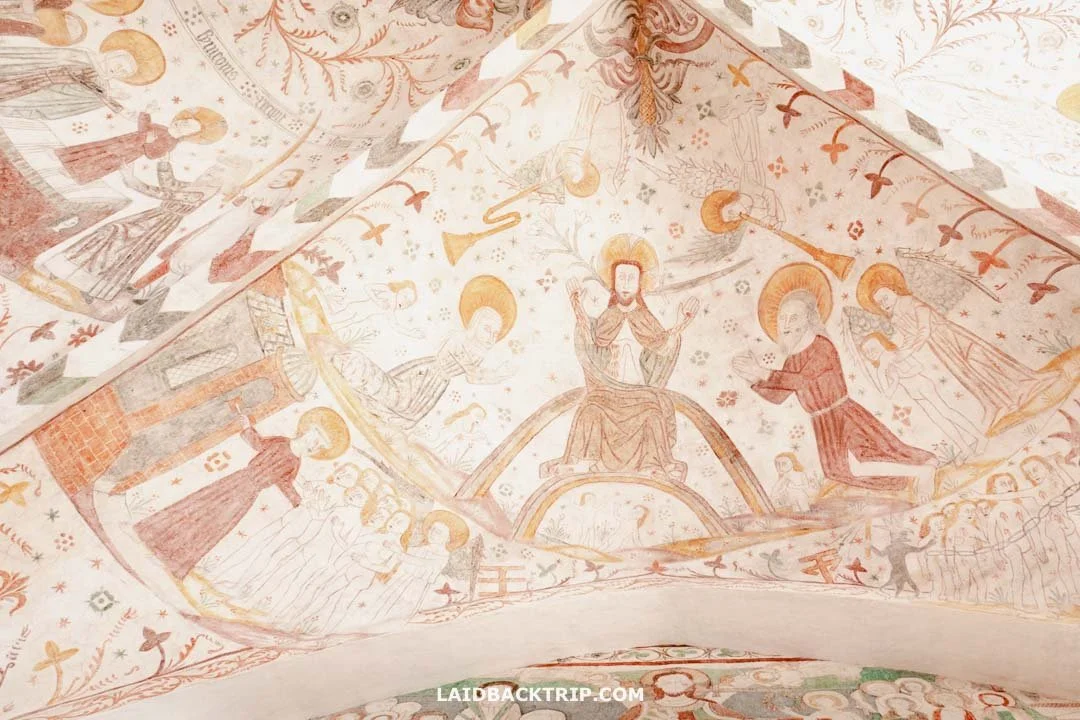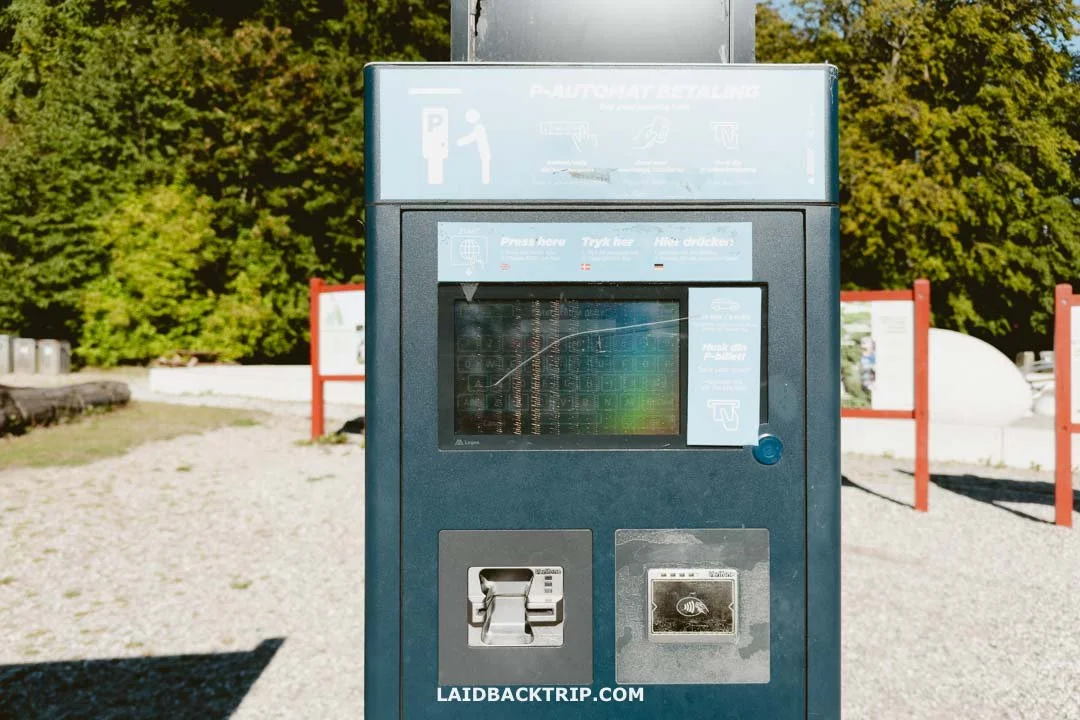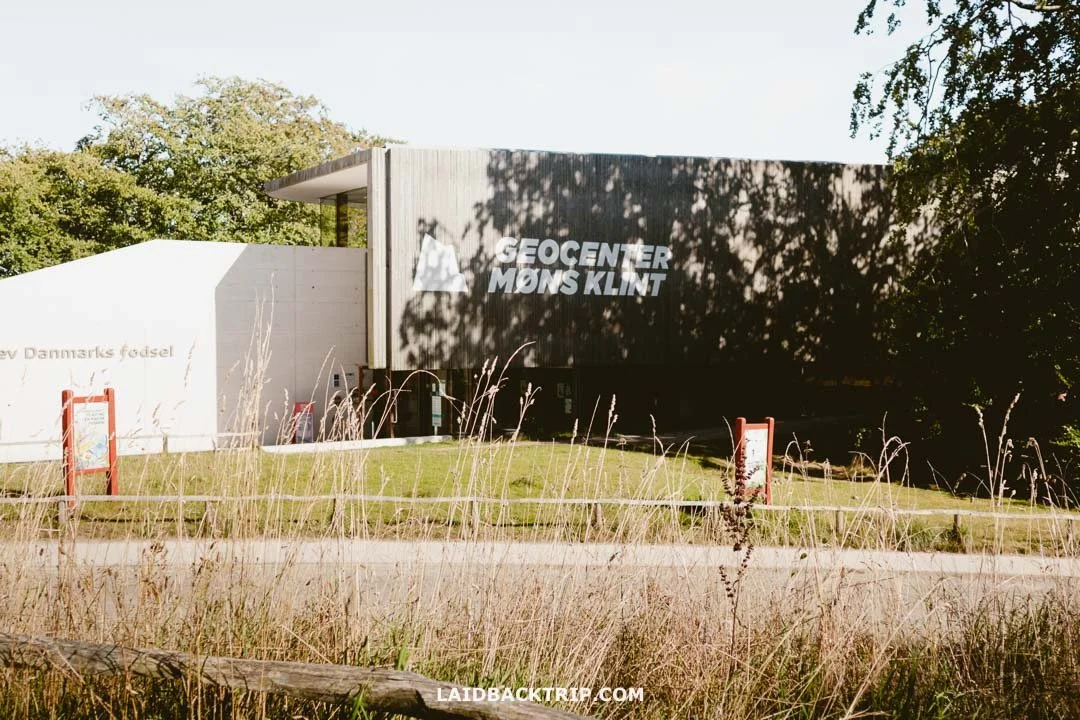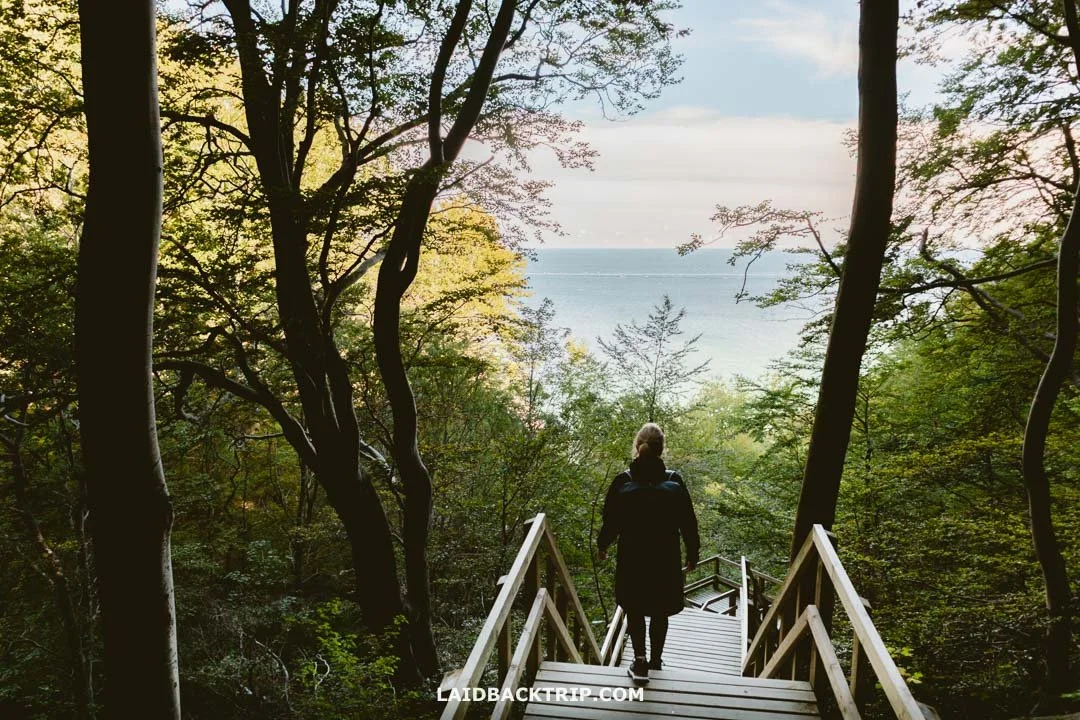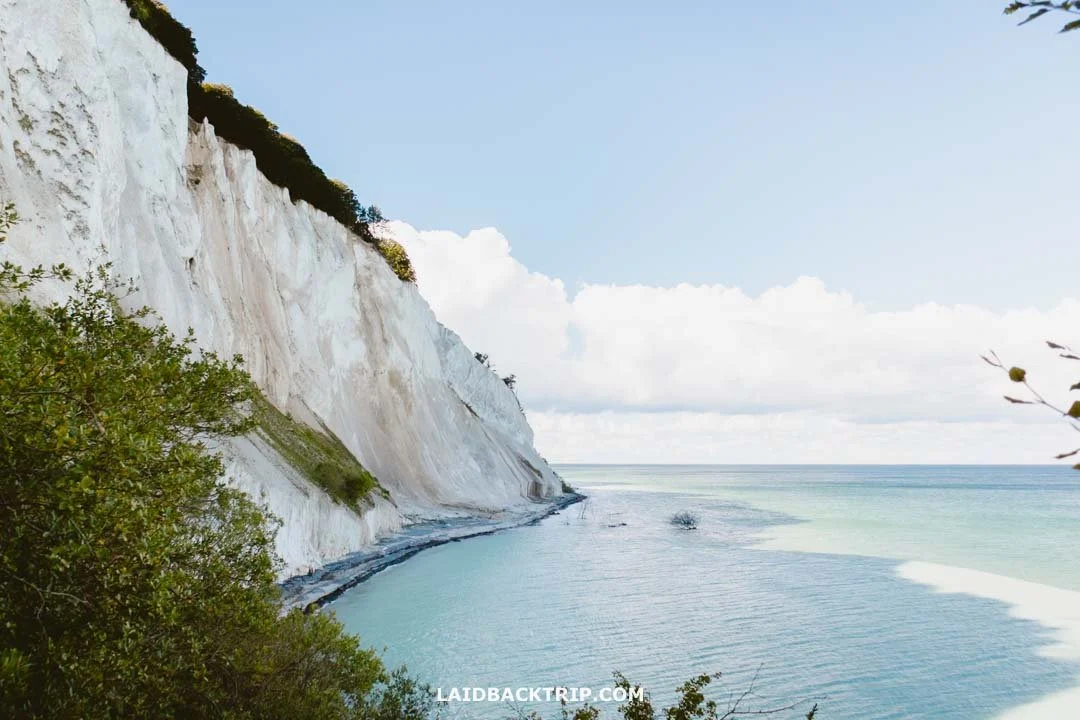Our Road Trip to Møn Island, Denmark
We happened to visit Mon Island as part of our road trip from Jutland to Copenhagen.
Here's a little recap of our trip around Mon Island.
Møn is home to one of the biggest attractions in Denmark, the beautiful Møns Klint, and like pretty much everyone who visits, those white cliffs were the main reason we traveled there, too. Even though it is a relatively small island, there is more to see and do in Møn beyond the cliffs, including a rich Neolithic history, a relaxed atmosphere, and some really interesting medieval churches.
And since we were traveling in our own car, we thought it would be nice to explore Møn Island a bit more and stop wherever we felt like. Our goal was not to visit every little site the island has to offer, we simply didn't have that much time, but instead to pick a few spots that caught our interest and could tell us a bit more about Møn's history, its people, and everything tied to it. And that is exactly how we spent the short time we had on Møn. So, let's get into it.
Yeah, we came to Mon Island mostly for the famous white chalk cliffs.
Drive Across the Dronning Alexandrines Bro
Since Møn is technically an island, we had to figure out how we were going to get there. It turned out to be pretty simple, as we were coming from Zealand, and the two islands are connected by a road bridge. That worked out perfectly for us because it meant we didn't need to take a ferry. In fact, there are actually two bridges that connect Møn with the rest of Denmark.
The bridge we crossed on the way is called Dronning Alexandrines Bro, and while it does not come close to giants like the Great Belt Bridge in terms of size, it was definitely one of the most beautiful bridges we have seen in Denmark. We were arriving from Trelleborg Fortress via Road 59, which gave us some really nice views that Lucie managed to capture through the side window of our car.
There was no need to take a ferry to Mon since we could just drive there.
On the western side, Møn connects by bridge to Bogø Island, which then connects to Farø Island, and from there, you can reach Zealand, Lolland, and Falster. We did not end up going that way, which was kind of a pity because it sounded like it could have been a fun drive.
Anyway, bringing our own car turned out to be the best way to explore Møn on this short trip (you can check rental car options here). Sure, you could join a tour from Copenhagen to Møns Klint or even try the local bus, but for us, none of those options really made sense.
First Stop at Kong Asgers Høj
So, after we crossed the Dronning Alexandrines Bridge, we did not head straight to the town of Stege. Instead, we turned left and made a quick detour to Kong Asgers Høj (King Asger's Mound). There, we found a 10-meter passage grave, which is one of the largest of its kind in Denmark.
Møn has been inhabited since at least 4000 BCE, but it was around that time that agriculture came to Denmark, and the once nomadic people began settling on the island.
Kong Asgers Høj burial mound sits right beside the road.
Life changed completely back then, not only because farming took hold but also because people began burying their dead in entirely new ways. They built all sorts of megalithic tombs, and many of them have survived to this day. Since Møn is packed with these ancient burial sites, we made a point to see at least a few while we were there.
From the parking area, the tomb looked almost modest, but that was mostly because we had seen the massive burial mound at Brú na Bóinne in Ireland a few years ago, so we had something to compare it to. What made this one special, though, was that it was totally accessible and free to explore. We left the car in a small gravel lot by the road and walked just around 20 meters to get to the entrance.
This ancient passage grave dates back 6,000 years.
Since we didn't have a headlamp, we just used the phone's flashlight, which was totally fine; the tomb isn't very large anyway. Sure, there is not much inside apart from stones and a dirt floor, but standing in a space that has existed for more than 6000 years was still pretty incredible.
Roughly 150 meters from there was a small dolmen called Sprovedyssen (and supposedly another one about 500 meters past that), but we only saw it from the car and didn't walk over. Either way, it just goes to show how densely settled Møn was during the Stone Age.
A Quick Visit of Stege Town
Our next stop was the seaside town of Stege, the largest town on Møn. After crossing the bascule bridge, we turned left into a free parking lot right along the waterfront. We didn't really have a plan, so we just wandered around for a bit. The town was pretty small, and I think we spent maybe 30 minutes there, tops.
Stege Church was just a short walk from the waterfront.
Stege had a bit of everything we'd expect in a place like this: a few charming streets, a small harbor, some accommodations, cafes, restaurants, a couple of regional museums, and a red brick church. But since we weren't there for food or a place to stay, there wasn't much reason to stick around longer.
The mural of Stege town and Mon Island was pretty cool.
Honestly, if time is tight, just a drive through Stege gave us a decent overview of the town. It was mostly the main street that caught our attention. We thought about spending the night in Stege or somewhere on Møn, but ultimately, we chose to leave the island and watch the sunset at Stevns Klint, but that's another story. That said, there were a few nice spots to stay, such as Motel Stege and Stege Nor.
Stege may be small, but the main street had plenty of charm.
Onward to Keldby Church
Following our visit to Stege, where we also noticed a church (simply named Stege Church), we set out to explore the medieval churches of Møn, a testament to how wealthy and important the island once was. Looking at the map, it seemed like almost every village had its own church. There are seven notable churches to visit, but we decided to concentrate on those along Road 287, which would eventually lead us to the cliffs.
At first glance, Keldby Kirke looked just like most other churches around here.
Next, we visited Keldby Kirke, a Romanesque church from the early 1200s. Its red-brick exterior reminded us of the traditional churches we'd seen in Ribe and Svendborg. The church was open to the public and free to enter, so we went inside. The building itself was fairly small, but the frescoes by Master Elmelunde, an unknown painter who also worked on Fanefjord and Elmelunde churches, were absolutely stunning.
But the frescoes inside were truly unique.
The paintings were simpler but still full of detail. The frescoes depict the Biblia pauperum, or the 'Paupers' Bible,' which explains their simplicity so everyone, whether Middle Age peasants or modern-day tourists like us, could understand them. They were also very different from the traditional religious frescoes we had seen in places like Versailles Château or Würzburg Residence. Now that I think about it, I don't believe we've seen anything quite like them before.
Another nice touch was the ship hanging from the ceiling. While that felt unusual to us, we had already seen something similar earlier at Jelling Church. After finishing our visit, we hopped back in the car and continued on.
Another Church - Elmelunde Kirke
Then, we visited Elmelunde Kirke, the oldest church on Møn, dating back to 1075 CE. It's home to beautiful frescoes also created by Master Elmelunde. The church's whitewashed exterior made it look very different from Keldby and reminded us of a similar one we'd seen on Rømø Island earlier.
The whitewashed walls really help shield the buildings from Mon Island’s rough weather.
In Scandinavia, white lime-based paint is often applied to brick churches to help reduce weather damage, but it also stands for purity. The church was open and free to enter, so we went inside.
The frescoes in this church were also done by Master Elmelunde, so to our (untrained) eyes, they looked pretty much the same, and there was a ship hanging from the ceiling again. There were a few tourists at Keldby, but we had Elmelunde Kirke just to ourselves, which was pretty cool. We spent some time studying the scenes on the frescoes, but since the church was fairly small, we didn't stay inside too long.
Elmelunde Church has frescoes not just on the ceiling vaults, but on the walls too.
A Side Trip to Sømarkedyssen Dolmen
Once we had seen those two churches, we wanted to dive deeper into the island's Neolithic past. We drove past Borre Kirke and kept going toward Magleby. About 100 meters beyond the Magleby Kirke, we turned left onto Sømarkevej, and then, after around 800 meters, we turned right onto Stendyssevej. Before long, we spotted the dolmen on our right side.
Somarkedyssen Dolmen is definitely off the beaten path.
Since the road was basically a narrow, one-lane path, we were already driving slowly, but we slowed down even more to look for a parking spot. Soon, we saw a small white sign indicating parking about 80 meters ahead. We drove past the dolmen and found a small grassy area on the right side (no proper parking lot, just a patch before the trees) where we parked. From there, a narrow grassy trail led us about 50 meters to the passage grave on a small hill.
The burial chamber of Sømarkedyssen has a hexagonal shape.
Though technically made up of just a few massive stones topped with a giant capstone, Sømarkedyssen was definitely one of the most beautiful dolmens we've ever seen (maybe it's also because it was restored). Despite the size of the huge stones, the structure itself is quite small, yet somehow very picturesque. It appears to have been built around 3200 BCE, with a chamber once covered by earth, forming a mound in the past.
It was a quick visit, but we were glad we made the detour. From here, we turned around and headed back to Magleby, with our next stop being Møns Klint and the GeoCenter.
Travel Insurance
We never leave home without travel insurance that was designed to cover our expenses if something goes wrong during the trip.
Travel insurance protects against theft, flight delays, injury, illness, cancellations, and much more.
World Nomads provides travel insurance for travelers to cover their trip essentials, including sports and adventure activities.
SafetyWing is affordable travel insurance for backpackers, long-term travelers, and digital nomads.
Travel smarter and safer!
Optional Visit to Møns Klint GeoCenter
Next, we drove to Møns Klint GeoCenter, where we parked in a paid lot. We decided not to go inside since we didn't have enough time, but the museum definitely seemed like a great place to start any visit. We arrived late in the afternoon, and between the limited time and the pricey entry fee (155 DKK per adult), we chose to spend our extra time outside, enjoying nature instead.
Parking at the Geocenter wasn't free, likely because of the cliffs.
And honestly, who could blame us? It was a gorgeous sunny day, and even though the temperatures were a bit cooler, it was nearly perfect for being outside. I mention this because the museum is a great complement to a visit to Møns Klint on a rainy day. Walking along a beach while it's windy and raining isn't exactly enjoyable, so that's when the museum visit really becomes worthwhile.
Anyway, the Møns Klint GeoCenter tells the story of the cliffs' geology and offers a 3D film, VR, interesting fossils, and lots of activities, which is why it's especially popular with families. It's open from 10 AM to 6 PM in the summer, with slightly reduced hours the rest of the year, and closed from November to March.
We just checked out the GeoCenter from the outside.
Finally, the Møns Klint
Now, it was finally time to explore Møns Klint. We were really excited since the cliffs were the main reason we came to Møn Island in the first place. There was plenty to see, so we laced up our hiking shoes, quickly planned our route, and set off. We had to improvise a bit because one of the wooden staircases connecting the upper cliffs to the beach below was damaged and hadn't been fixed yet. Still, we only missed one section of the beach and managed to see a lot. We put together a practical Møns Klint guide describing the trails we took and more tips, so be sure to check it out.
It was just under 500 steps to walk down to the beach.
After descending about 500 steps through a forested section of the cliffs, we finally reached the beach. The cliffs towered right above us, and with the highest point reaching 128 meters, it was definitely an impressive view.
On a sunny day, the cliffs of Møn were absolutely breathtaking.
These cliffs began forming around 70 million years ago and continued developing through the Ice Age, resulting in the stunning white chalk formations we see today. The cliffs are still changing, due to erosion and frequent landslides that reshape the landscape and sometimes close trails, as happened when we were there. We hiked roughly 4 kilometers, which doesn't sound like a lot, but it was a truly fantastic experience.
With views like this, it really felt like we were on a different planet.
So, that's pretty much everything we saw on Møn Island. We didn't cover everything, and honestly, that wasn't the goal. If we had had more time, we would've also visited other Neolithic sites like Grønsalen and Klekkendehøj, Fanefjord Church, Klintholm Strand, or even Thorsvang Samlermuseum.
And because we didn't stay overnight, we missed the chance to enjoy the fact that Møn Island is a designated Dark Sky Park, making it one of the top spots for stargazing in Denmark. For accommodation, Klintholm Marina Park Cabins and Liselund Ny Slot Hotel are great options to consider.
But if you're planning a day trip to Møn from Copenhagen and want to know what to check out (even if it's just for a few hours), I hope this guide inspires you a bit. And if you're wondering where we headed next, come along with us to the Stevns Cliffs.
Travel Resources
Here you can find links to all the travel resources we use and which you might find helpful when planning your next holiday.
Accommodation: When looking for accommodation, we usually search hotels via Booking.com or Hostelworld.
Tours: Although we love to travel independently, some places are better to visit with a guided tour.
We prefer GetYourGuide for its easy-to-use interface and solid reputation. Another great alternative is Viator.
Rental Cars: When going on a road trip, we always use Rentalcars.com, a reliable site for booking a rental car in advance.
Flight Tickets: When looking for flight tickets, you can search Skyscanner to find the best price.
Travel Insurance: World Nomads and SafetyWing cover against risks of travel.







